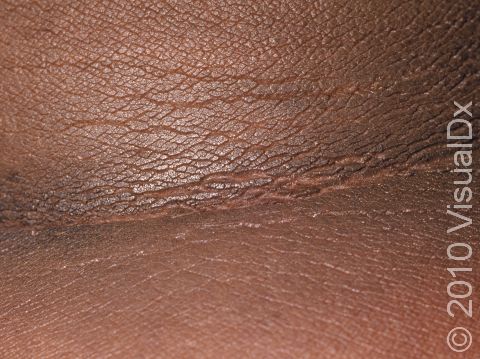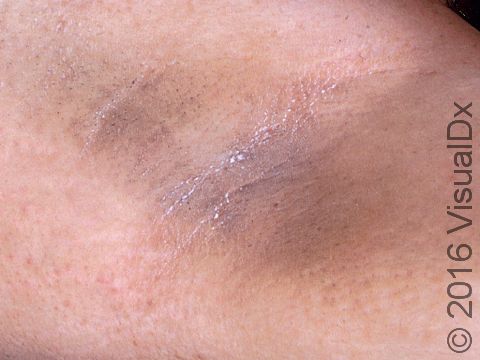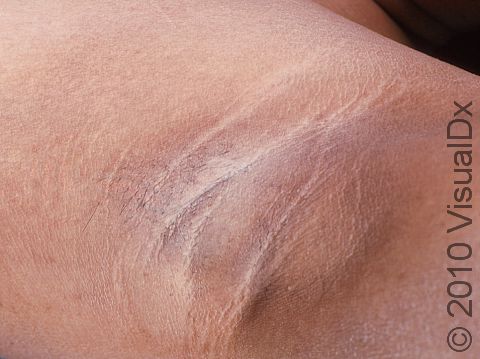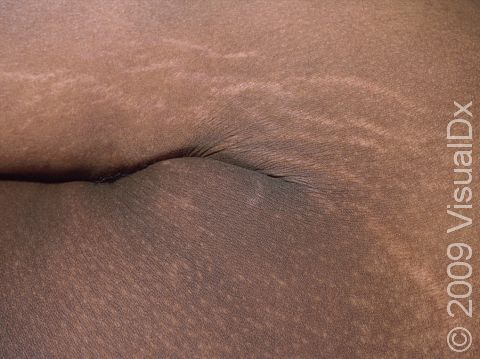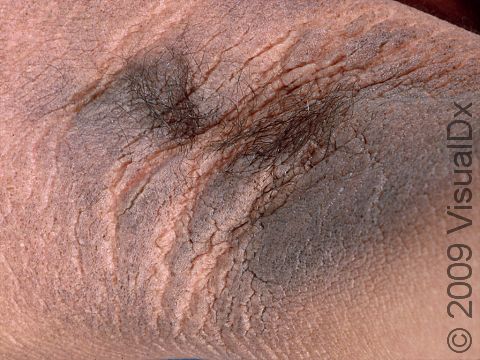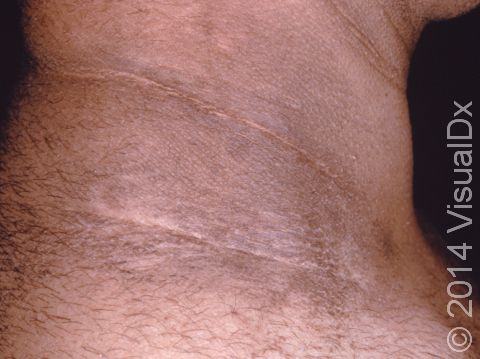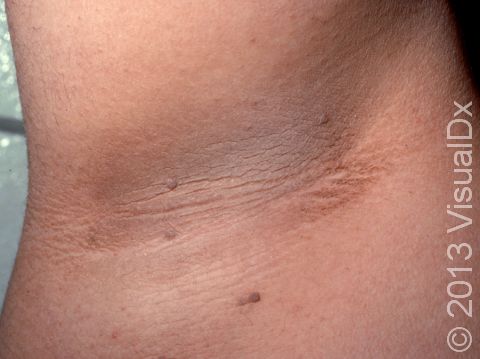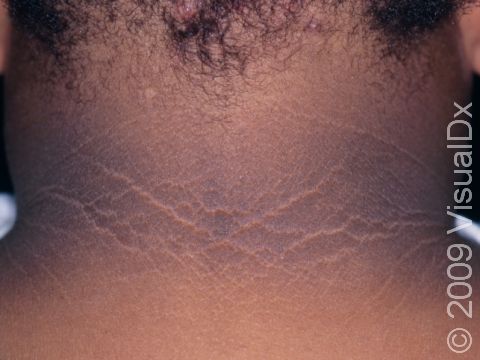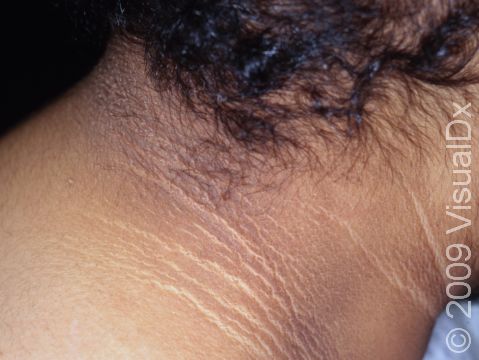Acanthosis Nigricans
Acanthosis nigricans is a condition characterized by abnormal thickening and darkening of the skin, especially in body creases. It is most commonly associated with obesity or polycystic ovarian disease in women, though acanthosis nigricans can occasionally be found in people who have more serious underlying health problems or who are taking certain medications. Treatment of the underlying medical condition usually resolves the skin lesions.
Who's At Risk?
Acanthosis nigricans can affect individuals of any age, including children and those of any ethnic background. However, it is more common in adults and in people with darker skin. Males and females are affected equally.
Groups of people who commonly develop acanthosis nigricans:
- Overweight or obese persons
- People with endocrine (glandular) abnormalities
- Persons taking certain medications (for example, oral contraceptives, niacinamide, corticosteroids)
- Kidney transplant patients
- People with internal malignancy, especially stomach cancer (very rare cause of acanthosis nigricans)
Signs & Symptoms
The most common locations for acanthosis nigricans include:
- Sides and back of the neck
- Armpits
- Groin
Less commonly, acanthosis nigricans can affect these areas:
- Face
- Inner thighs
- Elbows
- Knees
- Navel or belly button
Very rarely, acanthosis nigricans can be found in these locations:
- Nipples and breasts
- Eyelids
- Lips
- Inside the mouth
- Anus
The lesions of acanthosis nigricans appear as “velvety” thickenings, and they can range in color from gray to brown to black. Darker-skinned individuals tend to have darker lesions.
Self-Care Guidelines
Because most people who develop acanthosis nigricans are overweight, their skin lesions can improve dramatically and even resolve with weight loss. Other underlying medical conditions should be treated as well.
Other treatments that might help include:
- Weight loss by changing dietary and exercise habits.
- Over-the-counter preparations containing alpha-hydroxy acids, such as glycolic acid or lactic acid.
- Over-the-counter lotions containing salicylic acid.
- Over-the-counter creams containing urea.
- Over-the-counter cortisone cream (if the areas are itchy).
Treatments
The doctor will certainly try to establish the underlying cause of the acanthosis nigricans. If it is due to obesity, then assistance with weight loss may be in order. If obesity is not a factor, the physician may try to determine an underlying cause by ordering blood work, X-rays, or other diagnostic tests.
Once the underlying medical condition has been established and is being treated, your physician may recommend a topical cream or lotion containing the following:
- Prescription-strength alpha- or beta-hydroxy acids (glycolic acid, lactic acid, salicylic acid)
- Prescription-strength urea
- A retinoid such as tretinoin, tazarotene, or adapalene
For more severe, stubborn acanthosis nigricans, oral treatments may include:
- Dietary fish oils
- Isotretinoin, a very strong medication with many potential side effects, usually used in the treatment of severe, scarring acne
Not usually covered by insurance, some procedures to treat acanthosis nigricans include:
- Dermabrasion, a mechanical process of controlled, surgical scraping of the skin
- Lasers that thin the skin by destroying the uppermost layers
Visit Urgency
If you notice thickening and darkening of the skin folds, it is probably a good idea to see your primary care provider. If the acanthosis nigricans is due to obesity, then you can have medical assistance developing healthy strategies to attain your weight goals.
The sudden development of widespread acanthosis nigricans (involving the skin folds as well as the palms of the hands, the lips, and other, less typical areas) should prompt immediate medical attention. The doctor may be able to diagnose and treat a more serious underlying medical condition that is causing the acanthosis nigricans.
Trusted Links
References
Bolognia, Jean L., ed. Dermatology, pp.712-115, 1717. New York: Mosby, 2003.
Freedberg, Irwin M., ed. Fitzpatrick’s Dermatology in General Medicine. 6th ed, pp. 1652, 1796. New York: McGraw-Hill, 2003.
Last modified on October 10th, 2022 at 7:24 pm

Not sure what to look for?
Try our new Rash and Skin Condition Finder
